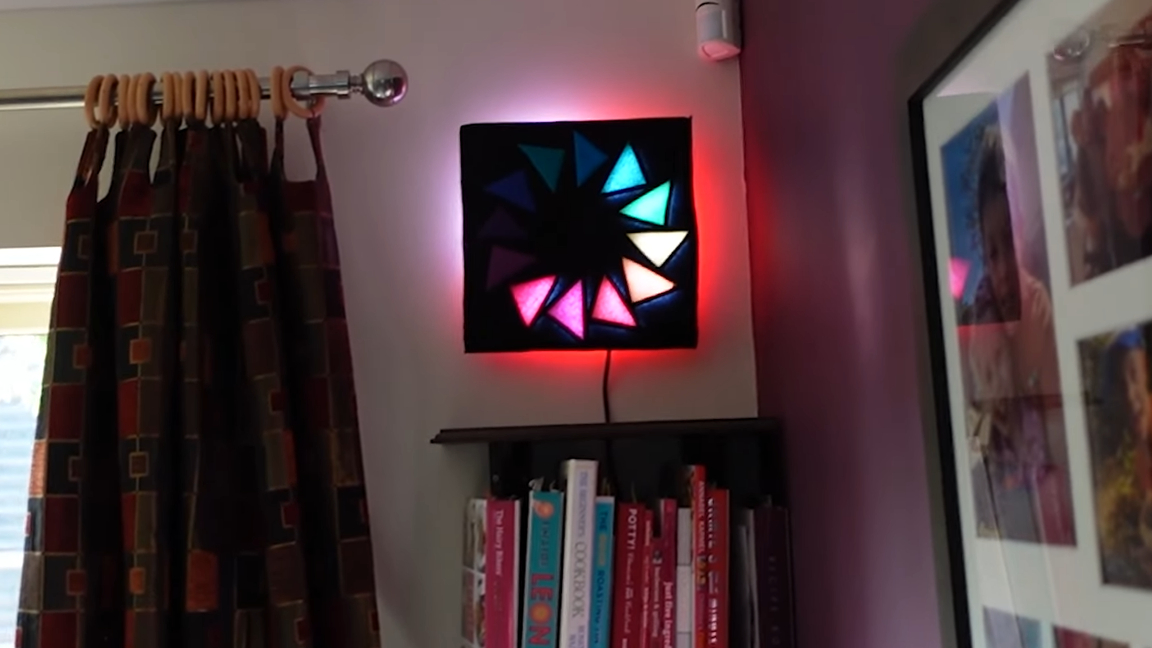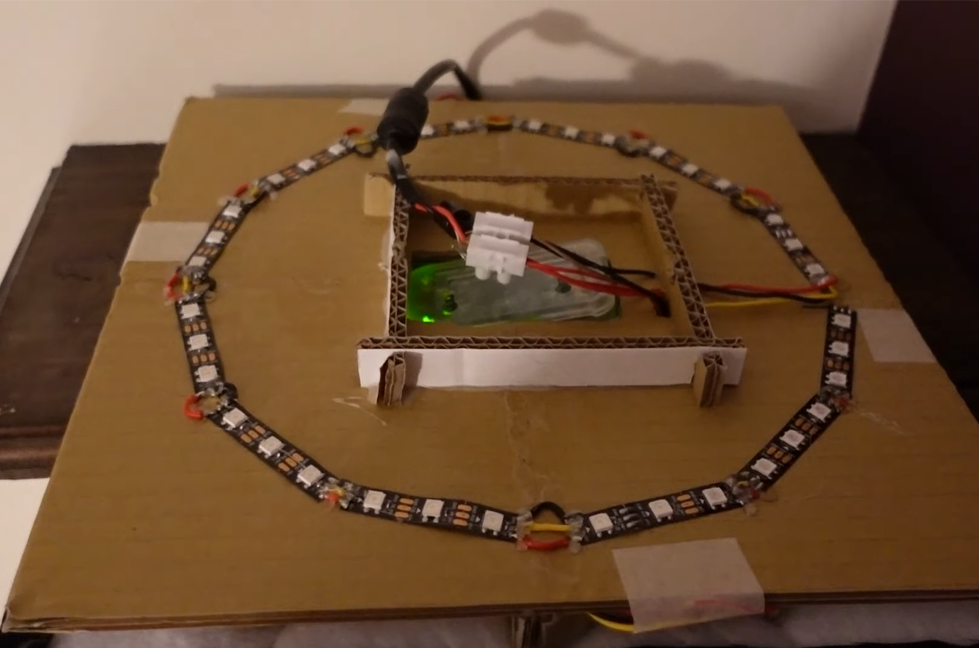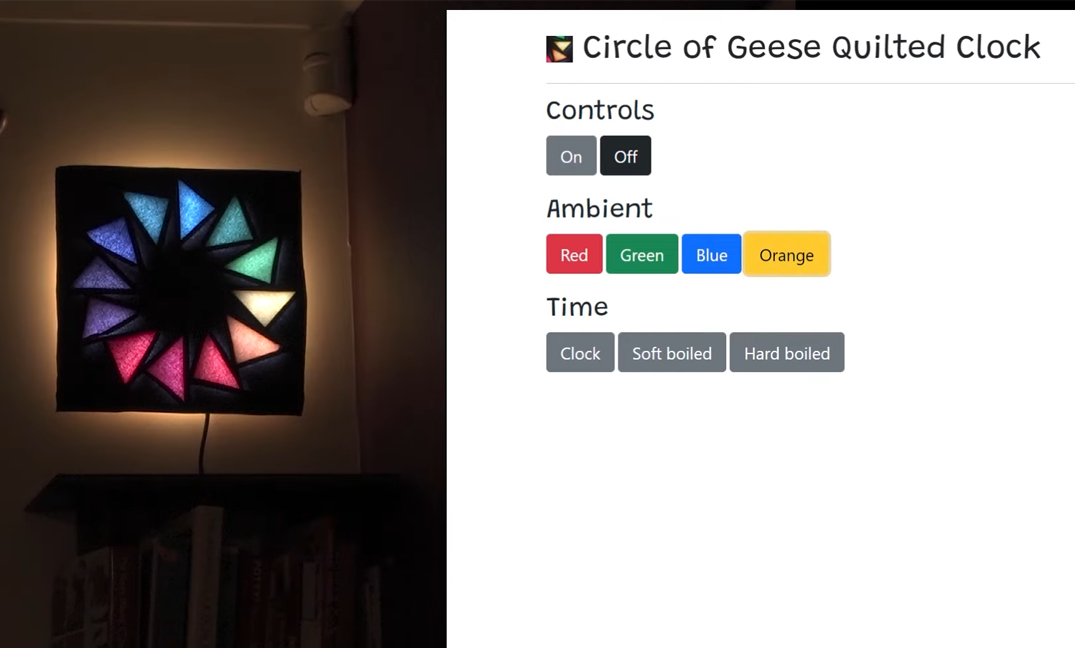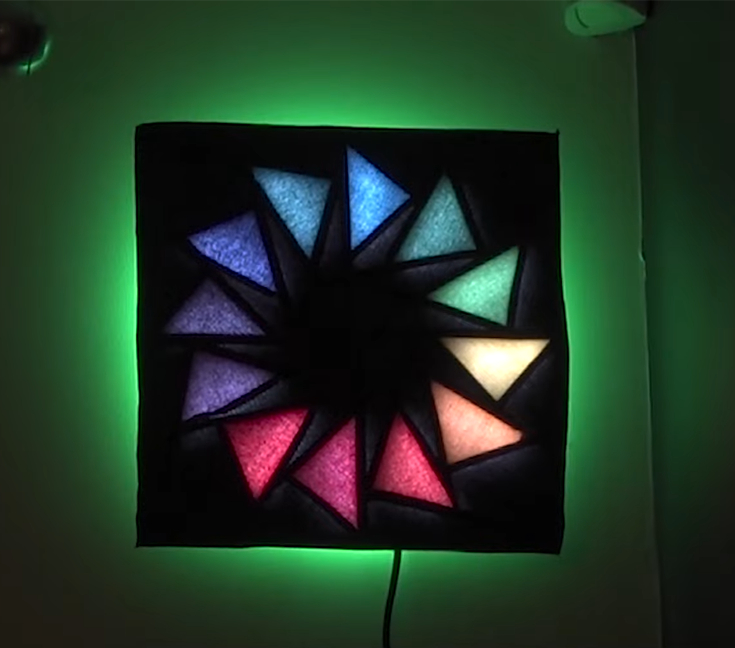
Maker and school teacher Russell Eveleigh combines multiple hobbies into one with this impressive Raspberry Pi Zero-powered quilt block clock. Not only did he design and code the project from scratch but he also took the time to sew the quilt block himself with a beautiful “flying geese” pattern.
This Pi Zero-powered quilt block clock is wall-mounted, featuring embedded LEDs that illuminate to indicate time down to the second. The frame is made using cardboard which keeps the quilt block taut while the LEDs shine both through the flying geese triangles and behind the clock for an ambient effect.
Like we mentioned above, Eveleigh is a school teacher, using his experience to share this project as an open-source creation with plenty of details for anyone curious about how it works. Eveleigh has plenty of experience with electronics, coding and making projects with the Raspberry Pi—a history of which is detailed on his official website.
This crafty wall clock doesn’t require too much hardware to recreate but it definitely takes a bit of skill and plenty of patience to complete. A Raspberry Pi Zero is used to power the WS2812B (NeoPixel) LEDs and manage the various time-keeping functions of the clock. The quilt block requires, at the very least, a selection of fabric, thread, and needles to construct but would be easier to complete with a template, fabric marker or chalk and a sewing machine. A 5V power supply is used to power the LEDs and Pi Zero.



Creating a quilt block clock is impressive enough but this project comes with a few extra features that caught our attention. A Python script manages the timekeeping function but Eveleigh is also using an Apache webserver to host an HTML webpage with options to set an egg timer for both soft and hard-boiled eggs.
If you want to make this Raspberry Pi project yourself or just see in it action, you can check out the project details shared by Eveleigh on his website and head over to the project GitHub page to dig into the code he created to control the LED effects.
Stay On the Cutting Edge: Get the Tom's Hardware Newsletter
Get Tom's Hardware's best news and in-depth reviews, straight to your inbox.

Ash Hill is a contributing writer for Tom's Hardware with a wealth of experience in the hobby electronics, 3D printing and PCs. She manages the Pi projects of the month and much of our daily Raspberry Pi reporting while also finding the best coupons and deals on all tech.